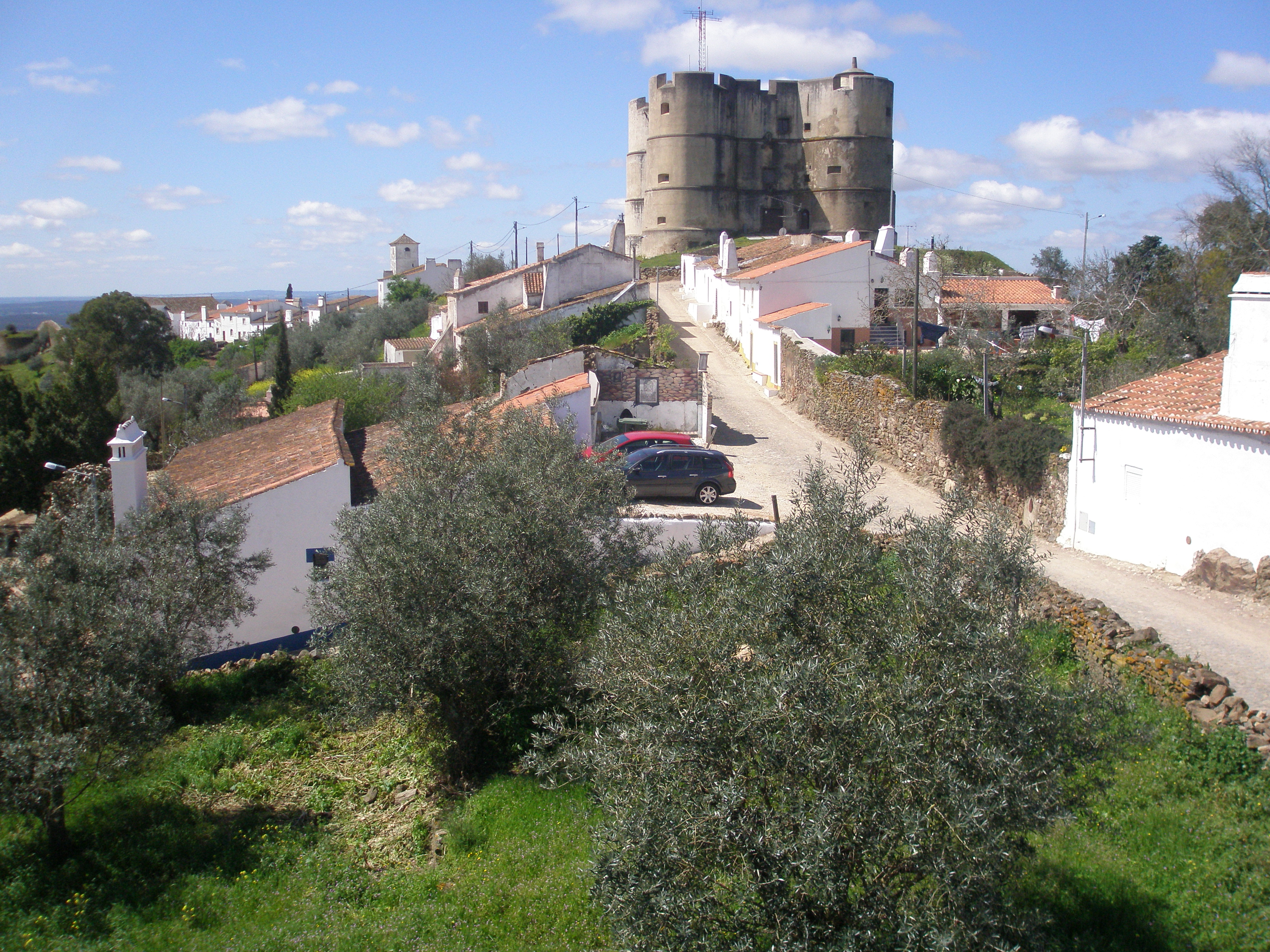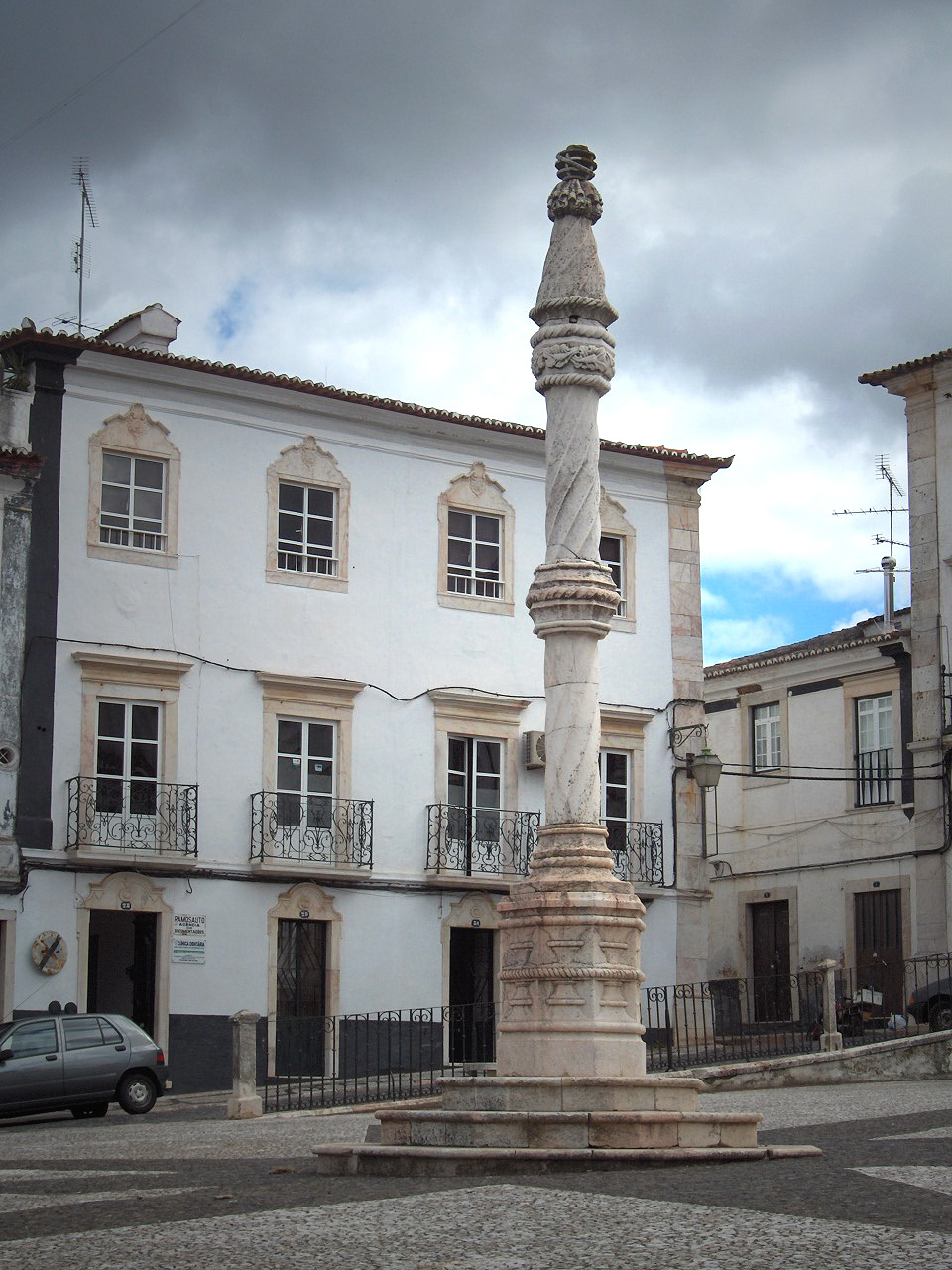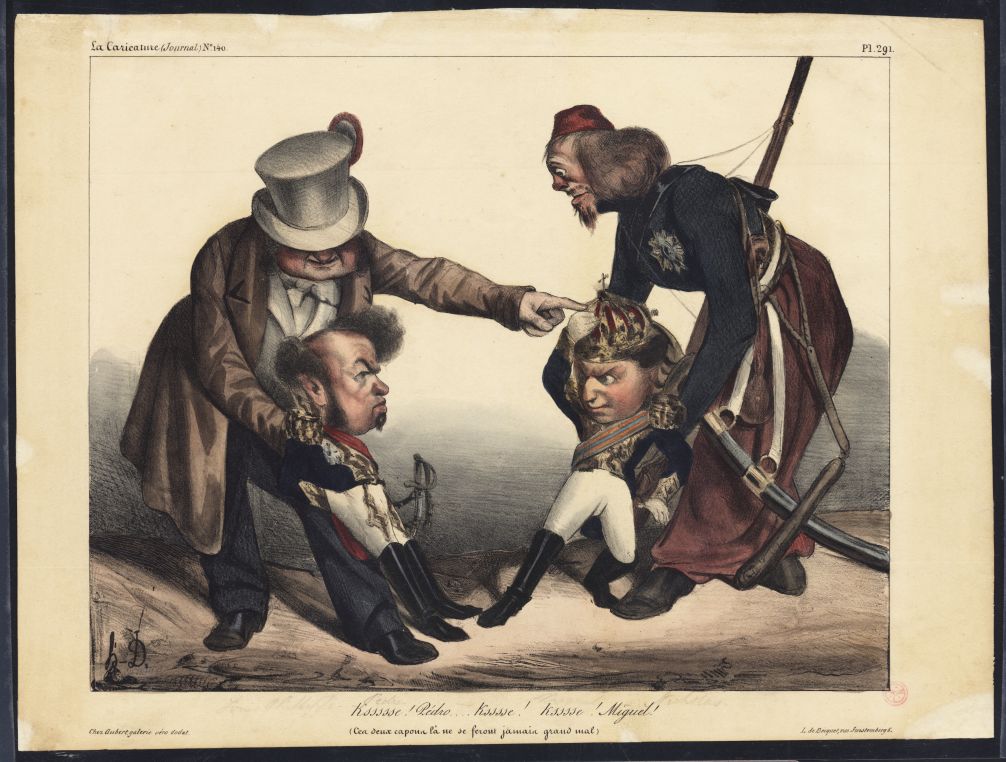|
Evoramonte
Evoramonte, or Г‰vora-monte, (officially spelled ''Г‰vora Monte'') is a civil parish in the municipality of Estremoz in the Alentejo Central subregion of Portugal. The population in 2011 was 569, in an area of 99.38 kmВІ. History Distinguished by its historic castle, the territory was founded in 1160. The parish of Evoramonte was issued a foral (''charter'') in 1248 by King D Afonso III, with further administrative privileges granted in 1271. The town was fortified in 1306 on the order of King Dinis. Around 1801, there were approximately 2661 inhabitants in the municipality of Evoramonte, an area that included approximately . At that time, the municipality included five parishes: Evoramonte, SГЈo Pedro, SГЈo Bento do Mato, Freixo and VidigГЈo. After the administrative reforms that started with beginnings of Liberalism, the parish of Santa Justa was annexed to the municipal authority. In 1849, there were 3030 inhabitants in a territory of . It was on 26 May 1834, that th ... [...More Info...] [...Related Items...] OR: [Wikipedia] [Google] [Baidu] |
Castle Of Evoramonte
The Castle of Evoramonte, alternately spelled ''Г‰vora Monte'' or ''Г‰voramonte'', ( pt, Castelo de Г‰vora Monte/Castelo de Evoramonte, links=no) is a Portuguese castle in the civil parish of Evoramonte, municipality of Estremoz in the former district of Г‰vora. Initiated in 1160, in the Gothic period, it was enlarged in later centuries in the Manueline style. It was at this site that the Concession of Evoramonte (or the ''Convention of Evoramonte'') on was signed on 26 May 1834, that ended Liberal Wars between the Liberal forces of Queen Maria II of Portugal (under the regency of her father Peter VI of Portugal) and Absolutist armies of Miguel of Portugal.David Birmingham (1993) Since 1910, it has been listed as a Portuguese National monument. History Sometime during the 12th century, the region of Г‰vora Monte was conquered from the Moors by the forces of Geraldo Sem Pavor. By 1248, a foral (''charter'') was issued to the region to provide incentives for settlement, which was ... [...More Info...] [...Related Items...] OR: [Wikipedia] [Google] [Baidu] |
Concession Of Evoramonte
The Concession of Evoramonte, also known as the Convention of Evoramonte,Smith, p. 398 was a document signed on 26 May 1834, in Evoramonte, in Alentejo, between the Constitutionalists and the Miguelites, that ended the period of civil war (1828–1834) in the Kingdom of Portugal. On the Concession of Evoramonte, Dom Miguel I of Portugal, to end the bloodbath in the country after six years of civil war, surrendered and abandoned his claim to the Portuguese throne, being also subjected to exile and perpetual banishment from the Kingdom of Portugal. It was signed by the representatives of the Constitutionalists, the Marshals of the Army, Duke of Terceira and Count of Saldanha, and by the Miguelite representative, Lieutenant General José António Azevedo e Lemos. Articles of the Concession of Evoramonte The Concession was initially composed of nine articles, with four more added the following day: *Article 1 - General amnesty was granted to all political crimes committed sinc ... [...More Info...] [...Related Items...] OR: [Wikipedia] [Google] [Baidu] |
Estremoz
Estremoz () is a municipality in Portugal. The population in 2011 was 14,318, in an area of 513.80 kmВІ. The city Estremoz itself had a population of 7,682 in 2001. It is located in the Alentejo region. History The region around Estremoz has been inhabited since pre-historic times. There are also vestiges of Roman, Visigoth and Muslim occupation. During the Reconquista, Estremoz was captured in the 12th century by the army of knight Geraldo Sem Pavor (''Gerald the Fearless''), who had also conquered neighbouring Г‰vora. However, Estremoz was soon retaken by the Moors and only in the mid-13th century was it reconquered by the Portuguese King Sancho II. An important strategic site between the Kingdoms of Portugal and Castile, Estremoz received a charter (fuero) in 1258 from Afonso III after the Moors were driven out a second time, which promoted Christian colonization in the area. King Dinis rebuilt the castle as a royal palace, further promoting the area. His widow, Dow ... [...More Info...] [...Related Items...] OR: [Wikipedia] [Google] [Baidu] |
Estremoz Municipality
Estremoz () is a municipality in Portugal. The population in 2011 was 14,318, in an area of 513.80 kmВІ. The city Estremoz itself had a population of 7,682 in 2001. It is located in the Alentejo region. History The region around Estremoz has been inhabited since pre-historic times. There are also vestiges of Roman, Visigoth and Muslim occupation. During the Reconquista, Estremoz was captured in the 12th century by the army of knight Geraldo Sem Pavor (''Gerald the Fearless''), who had also conquered neighbouring Г‰vora. However, Estremoz was soon retaken by the Moors and only in the mid-13th century was it reconquered by the Portuguese King Sancho II. An important strategic site between the Kingdoms of Portugal and Castile, Estremoz received a charter (fuero) in 1258 from Afonso III after the Moors were driven out a second time, which promoted Christian colonization in the area. King Dinis rebuilt the castle as a royal palace, further promoting the area. His widow, ... [...More Info...] [...Related Items...] OR: [Wikipedia] [Google] [Baidu] |
Liberal Wars
The Liberal Wars (), also known as the Portuguese Civil War (), the War of the Two Brothers () or Miguelite War (), was a war between liberal constitutionalists and conservative absolutists in Portugal over royal succession that lasted from 1828 to 1834. Embroiled parties included the Kingdom of Portugal, Portuguese rebels, the United Kingdom, France, the Catholic Church, and Spain. Roots of the conflict The death of King John VI in 1826 created a dispute over royal succession. While Dom Pedro, the Emperor of Brazil, was the king's oldest son, his younger brother Miguel contended that Pedro had forfeited his claim to the throne by declaring Brazilian independence. Pedro briefly entitled himself Dom Pedro IV of Portugal. Neither the Portuguese nor the Brazilians wanted a unified monarchy; consequently, Pedro abdicated the Portuguese throne in favor of his daughter, Maria, a child of 7. In April 1826, to settle the succession dispute, Pedro revised the first constitution of ... [...More Info...] [...Related Items...] OR: [Wikipedia] [Google] [Baidu] |
Pedro I Of Brazil
Don (honorific), Dom Pedro I (English: Peter I; 12 October 1798 – 24 September 1834), nicknamed "the Liberator", was the founder and List of monarchs of Brazil, first ruler of the Empire of Brazil. As King Dom Pedro IV, he List of Portuguese monarchs#House of Braganza (1640–1910), reigned briefly over Kingdom of Portugal, Portugal, where he also became known as "the Liberator" as well as "the Soldier King". Born in Lisbon, Pedro I was the fourth child of King Dom John VI of Portugal and Queen Carlota Joaquina of Spain, Carlota Joaquina, and thus a member of the House of Braganza. When the country was invaded by French troops in 1807, he and his family fled to Portugal's largest and wealthiest colony, Brazil. The outbreak of the Liberal Revolution of 1820 in Lisbon compelled Pedro I's father to return to Portugal in April 1821, leaving him to rule Brazil as regent. He had to deal with challenges from revolutionaries and insubordination by Portuguese troop ... [...More Info...] [...Related Items...] OR: [Wikipedia] [Google] [Baidu] |
Maria II Of Portugal
, image = Queen Maria II by John Simpson.jpg , caption = Portrait by John Simpson, 1835 , succession = Queen of Portugal , reign = , predecessor = Pedro IV , successor = Miguel I , reg-type = Regents , regent = Infanta Isabel Maria Infante Miguel , reign1 = 26 May 1834 – , coronation1 = 20 September 1834 , cor-type1 = Acclamation , predecessor1 = Miguel I , successor1 = Pedro V , reg-type1 = Co-monarch , regent1 = Fernando II , regent2 = Pedro IV , spouse = , issue = , issue-link = #Marriages and issue , house = Braganza , father = Pedro I of Brazil and IV of Portugal , mother = Maria Leopoldina of Austria , birth_date = , birth_place = São Cristóvão, Rio de Janeiro, Brazil , death_date = , death_place = Necessidades, Lisbon, Portugal , burial_date = 19 November 1853 , burial_place = Pantheon of the House of Braganza , religion = Roman Catholicism , ... [...More Info...] [...Related Items...] OR: [Wikipedia] [Google] [Baidu] |
King Dinis
Denis (, ; 9 October 1261 – 7 January 1325 in Santarém), called the Farmer King (''Rei Lavrador'') and the Poet King (''Rei Poeta''), was King of Portugal. The eldest son of Afonso III of Portugal by his second wife, Beatrice of Castile, and grandson of Afonso II of Portugal, Denis succeeded his father in 1279. His marriage to Elizabeth of Aragon, who was later canonised as a saint of the Roman Catholic Church, was arranged in 1281 when she was 10 years old. Denis ruled Portugal for over 46 years. He worked to reorganise his country's economy and gave an impetus to Portuguese agriculture. He ordered the planting of a large pine forest (that still exists today) near Leiria to prevent the soil degradation that threatened the region and to serve as a source of raw materials for the construction of the royal ships. He was also known for his poetry, which constitutes an important contribution to the development of Portuguese as a literary language. Reign In 1290, Denis began to p ... [...More Info...] [...Related Items...] OR: [Wikipedia] [Google] [Baidu] |
Arraiolos Municipality
Arraiolos () is a municipality in Г‰vora District in Portugal. The population in 2011 was 7,363, in an area of 683.75 km2. The town of Arraiolos has 3,351 inhabitants. The present Mayor is Silvia Pinto, elected by the Unitary Democratic Coalition. The town is famous for its castle and its embroidered wool rugs and carpets. Arraiolos rugs have been made since the Middle Ages.Fleming, John & Hugh Honour. (1977) ''The Penguin Dictionary of Decorative Arts. '' London: Allen Lane, p. 35. In October 2003, Jorge Sampaio, the then President of Portugal, invited the Presidents of Finland, Germany, as well as of soon-to-be EU members Hungary, Latvia and Poland to Arraiolos in order to discuss the consequences of the 2004 enlargement of the European Union and plans for a Treaty establishing a Constitution for Europe, Constitution for Europe. Subsequent meetings of non-executive presidents of European Union member states have been dubbed ''Arraiolos meetings''. History A hoard of prehi ... [...More Info...] [...Related Items...] OR: [Wikipedia] [Google] [Baidu] |
Г‰vora Municipality
Г‰vora ( , ) is a city and a municipality in Portugal. It has 53,591 inhabitants (2021), in an area of 1307.08 km2. It is the historic capital of the Alentejo and serves as the seat of the Г‰vora District. Due to its well-preserved old town centre, still partially enclosed by medieval walls, and many monuments dating from various historical periods, including a Roman Temple, Г‰vora is a UNESCO World Heritage Site. Due to its inland position, Г‰vora is one of Portugal's hottest cities in the summer, frequently subject to heat waves. Г‰vora is ranked number two in the Portuguese most livable cities survey of living conditions published yearly by ''Expresso''. It was ranked first in a study concerning competitiveness of the 18 Portuguese district capitals, according to a 2006 study made by Minho University economics researchers. Along with LiepДЃja, Latvia, Г‰vora was chosen to be European Capital of Culture in 2027. History Early history Г‰vora has a history dating ... [...More Info...] [...Related Items...] OR: [Wikipedia] [Google] [Baidu] |







